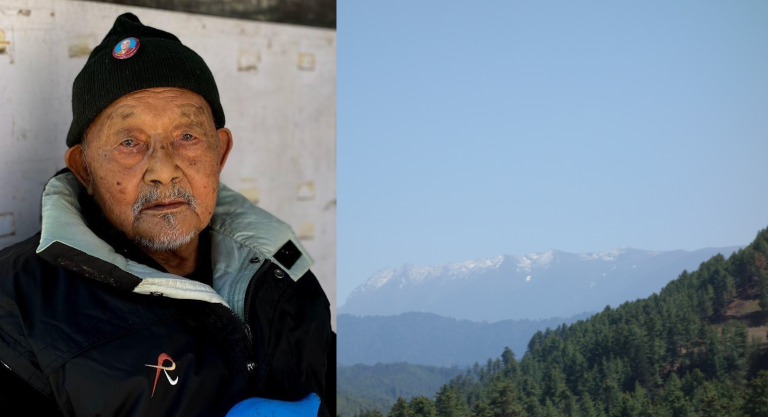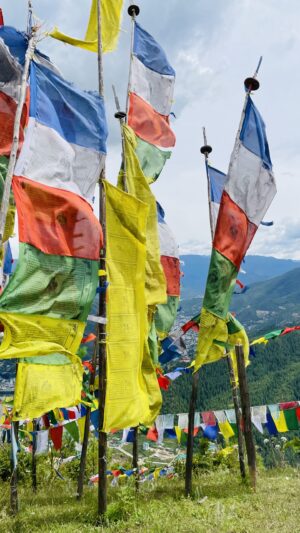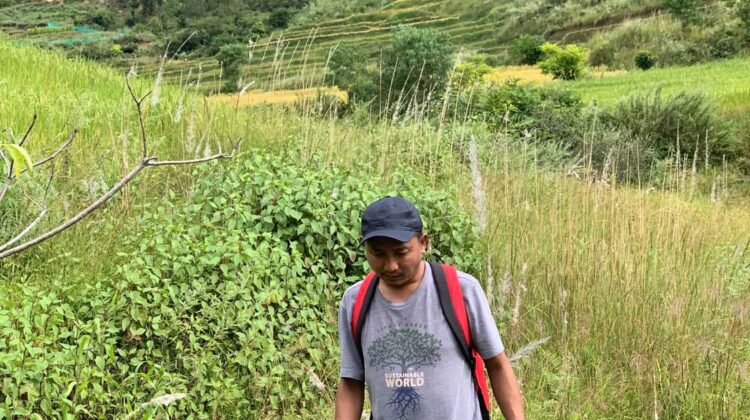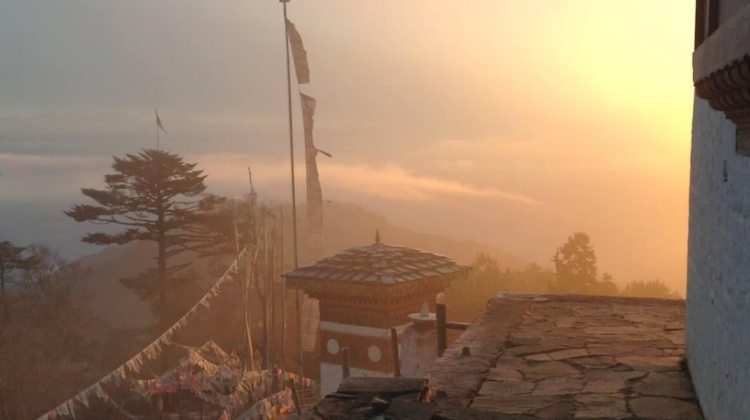Dorji Wangchuk is a 92 year old father, husband, brother, and above all traveler. Dorji fondly remembers and shares his memories of the old trails of Bhutan and how everything has since changed. He expresses how the Trans Bhutan Trail (TBT) is a great initiative to help both current and future generations understand and experience how Bhutanese ancestors used to travel.
Q: Did you travel the old trails?
A: Yes, we did. My wife and I are from Bumthang. I used to serve the Royals of Bhutan at Wangdicholing in Bumthang. With my growing family, we migrated and settled in Wangduephodrang.
Every year, during the 10th month of the Bhutanese calendar, Bumthang dzongkhag (district) celebrates tshechu (festival of masked dances) to receive blessings. We used to take the old trails to commute to Bumthang and back. However with the construction of motor roads, there is no need to walk the trail any more making it easier for travelers like us.
Q: Did you ever encounter any animals when you were on the trail?
A: No, I do not recall encountering any animals because when we traveled, we traveled in groups and with horses making it less likely for the animals to wander around.
Q: Are there any nyes (sacred places) or lhakhangs (temples) along the trail?
A: When you travel from Chhuzaygang, you will pass through a temple called Lhakhang Thangkha. With my growing age, I cannot recall the history of the temple but I know it is an important lhakhang built by a renowned lama.
As you reach Samtengang, you will see Tshatshay lhakhang and when you walk a little further, you will walk through Razawo temple near Dang Chhu.
Q: Tell me about the old trails to Trongsa.
A: After you cross Razawo temple, you have to climb a hill and you will reach Pelela after which you walk through Rukubjee, Chhazam, Chendebji, Nyalalum, Tashichoeling, Tshangkha, Trongsa Mangde Zam (bridge) and finally you reach Trongsa Dzong. All travelers, even cattle and horses, had to travel through Trongsa Dzong. There was no other way to travel between Wangdue and Bumthang but via Trongsa Dzong.



Meymey currently lives in Chuzomsa, Wangduephodrang with his wife and youngest daughter who run a restaurant serving commuters.








